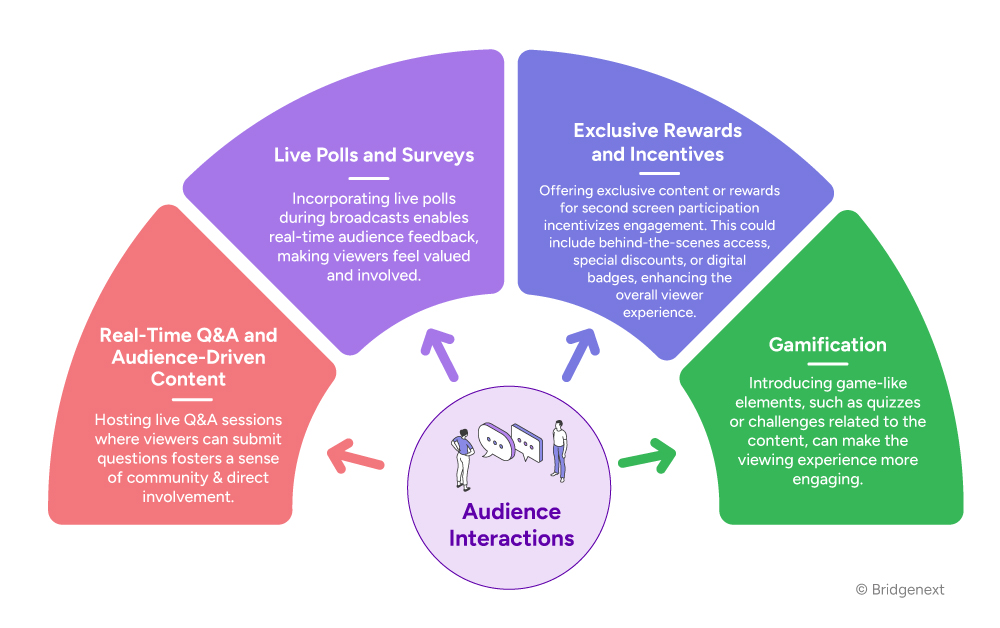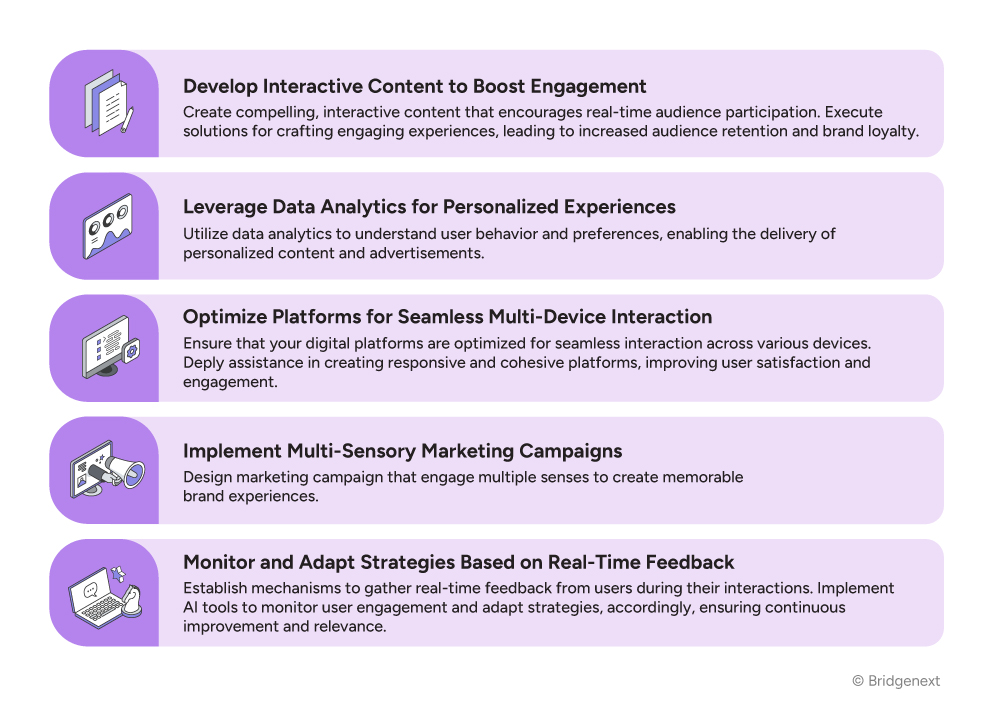03.19.25 By Doug Dimon

Today’s consumers aren’t just watching content; they interact, react, and make real-time decisions. Whether it’s live sports, reality TV, or a major product launch, second-screen engagement has transformed passive viewership into an interactive, multi-sensory experience. Think about the last time you watched a high-stakes game or a buzzy TV premiere—chances are, your phone was in your hand, scrolling through social media, checking live stats, or engaging in real-time discussions. This shift isn’t just a new habit—it’s a new expectation. Research shows that audiences exposed to promos for top streaming shows are up to 7 times more likely to watch, while brands that fail to engage consumers beyond the primary screen risk a 50% higher churn rate due to low engagement.
For brands, this presents both a challenge and an opportunity. The challenge? Cutting through the noise to create truly immersive experiences. The opportunity? Leveraging second-screen strategies to drive emotional connections, foster brand loyalty, and turn fleeting interactions into long-term relationships. With emotionally driven campaigns proving 31% more effective than rational ones, businesses that master this shift can unlock exponential growth.
So, what does it take to move beyond passive content consumption into active, high-impact engagement? Let’s dive in.
Second screens—smartphones, tablets, and laptops—have transitioned from potential distractions to pivotal engagement tools. This evolution enables brands to transform passive content consumption into interactive, multi-dimensional experiences. Let’s see how brands are turning passive interactions into participation:

The impact of second-screen engagement is undeniable. According to Nielsen, 86% of smartphone users browse the internet while watching TV, and 71% look up content related to what they’re watching. This behavior is especially prevalent during major live events like the Super Bowl, the Oscars, and sporting championships, where second-screen usage spikes for social media discussions, real-time stats, and exclusive behind-the-scenes content. Some examples are as follows:
During Super Bowl LIX, Doritos revitalized its “Crash the Super Bowl” contest, inviting fans to create and submit their advertisements. The winning ad was broadcast during the game, and the creator received a $1 million prize.
In a recent Super Bowl campaign, Bud Light introduced an interactive component that encouraged fans to engage via social media. By using designated hashtags and a companion microsite, viewers could access behind-the-scenes content and participate in live contests during the broadcast.
Second-screen advertising isn’t just about grabbing attention—it’s about sustaining it and turning fleeting interactions into meaningful engagement. But beyond engagement lies an even greater opportunity: data. Every click, comment, and interaction on a second screen generates valuable insights into viewer preferences, behaviors, and intent. By harnessing this data, brands can move from broad targeting to hyper-personalized experiences, crafting content and campaigns that resonate on a deeper level. So, how exactly can second-screen data help brands decode audience behavior and drive smarter decision-making? Let’s explore.
Brands that ignore second-screen engagement risk losing out on valuable consumer touchpoints. Studies show that passive audiences contribute to lower conversion rates, with potential revenue losses of up to 20%. Conversely, brands that create second-screen experiences—whether through live polls, interactive storytelling, or shoppable content—see up to a 50% increase in engagement and retention.
Second-screen engagement—where viewers use devices like smartphones or tablets while watching TV—has become a prevalent behavior, with 88% of Americans engaging in this practice. This trend offers businesses a wealth of data to enhance their understanding of viewer behavior.
Viewers frequently discuss shows on social media platforms during broadcasts, providing immediate feedback on content reception. For instance, during major live events like the Super Bowl, second-screen usage spikes for social media discussions, real-time stats, and exclusive behind-the-scenes content. This real-time data allows networks and advertisers to gauge audience sentiment and engagement instantly.
Second-screen data reveals detailed viewer preferences and behaviors, enabling more precise audience segmentation. By analyzing how audiences interact with content across multiple devices, businesses can tailor their marketing strategies to target specific demographics more effectively.
Insights from second-screen interactions allow for the customization of content to align with viewer interests. Streaming platforms, for example, utilize data on user preferences to recommend shows or movies, enhancing the viewing experience and increasing user retention.
Understanding second-screen behaviors enables advertisers to create synchronized campaigns across multiple devices, increasing ad relevance and effectiveness. For example, incorporating QR codes in TV ads that lead to interactive content on mobile devices can boost engagement and conversion rates.
Collecting data from second-screen usage provides a holistic view of viewer behavior, including engagement patterns and content preferences. This comprehensive data assists in refining programming decisions and marketing strategies to better meet audience demands.
By leveraging second-screen data, businesses can gain a deeper understanding of their audiences, leading to more effective content delivery and advertising strategies.
Second-screens act as a bridge between consumers and content, enabling real-time interaction and feedback. Features like live chats, interactive polls, and social media integrations allow audiences to participate in the narrative, transforming passive consumption into active involvement. This dynamic fosters a more immersive and personalized experience, strengthening the bond between the audience’s behavior and the content. In embracing co-screening and shared experiences, brands and broadcasters can cultivate vibrant communities, enhance viewer engagement, and adapt to the interactive future of media consumption.
To turn passive viewers into active participants, brands need a strategic approach that blends real-time interaction, personalization, and seamless integration across devices. Implementing a second-screen strategy isn’t just about engagement—it’s about driving measurable outcomes, from higher conversions to stronger brand loyalty. To get started, you’ll want to follow the steps mentioned below:

Understanding and implementing effective customer engagement strategies is paramount. By leveraging insights from industry leaders and adopting innovative approaches, brands can transform passive audiences into active participants, fostering loyalty and driving growth.
At Bridgenext, we specialize in providing the strategic insights necessary to reimagine your digital interactions. Let’s collaborate to elevate your customer engagement. Contact us today to discover how a thoughtful strategy, grounded in proven insights, can transform your brand’s digital presence.
References:
www.winsavvy.com/the-power-of-emotional-marketing-key-statistics/
persuasion-nation.com/emotional-marketing-statistics/
www.samba.tv/press-releases/samba-tvs-state-of-viewership-report-reveals-ott-and-linear-viewership-sets-new-record-with-streaming-up-56-yoy-and-linear-growing-at-8
www.aiscreen.io/blog/retail/multi-sensory-brand-experience-retail/
fbj.springeropen.com/articles/10.1186/s43093-025-00423-y